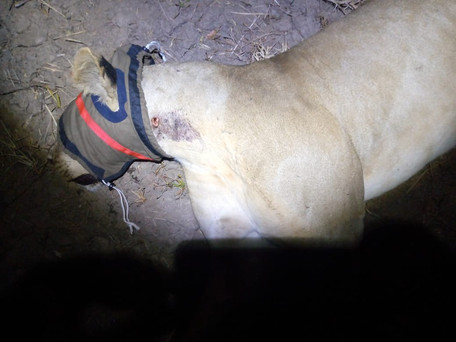Wildlife Conservation Operation: Niassa Special Reserve
- MWA
- Oct 10, 2023
- 2 min read
In a collaborative effort between our team, the Niassa Carnivore Project (NCP), the Lion Recovery Fund (LRF), and ANAC, a recent operation conducted in Niassa Special Reserve (NSR) provided valuable insights into the challenges facing local lion populations.
During a routine carnivore survey call-up operation, two lionesses were unexpectedly spotted on the road. Their presence raised immediate concerns, prompting our team to take action. Upon closer inspection, it became apparent that one of the lionesses was in poor physical condition, displaying signs of ill health. The other lioness had a noticeable wound on her neck.
A sub-adult female lion was carefully tranquilized to facilitate a thorough medical examination. The intervention included wound cleaning and essential medical support, including anti-inflammatory medication, antibiotics, and B-vitamins. Following approximately an hour of treatment, the lioness was successfully revived, and her recovery was promising.
The second lioness was also tranquilized for a comprehensive clinical examination, as she displayed signs of ill health, likely due to a chronic inflammatory condition. Her physical condition was concerning, with protruding ribs and numerous exudative wounds on her back. Supportive therapy, involving subcutaneous saline solution, corticosteroids, antibiotics, and complex B-vitamins, was administered. After treatment, the lioness was safely reversed and began her recovery process.
Despite our best efforts and the ongoing monitoring of one of our colleagues, her reserved prognosis and the safety concerns of having a lioness in close proximity to a road and a nearby village led to a difficult decision. Ultimately, the decision was to euthanize her in the interest of both human and wildlife safety.
This operation underscores the complex and often challenging nature of wildlife conservation efforts in Niassa Special Reserve. It highlights the importance of collaborative partnerships and the need for ongoing research and intervention to protect and preserve the region's invaluable lion populations. Our commitment to the conservation of these creatures remains unwavering as we strive to ensure a balanced coexistence between humans and wildlife!










Komentar